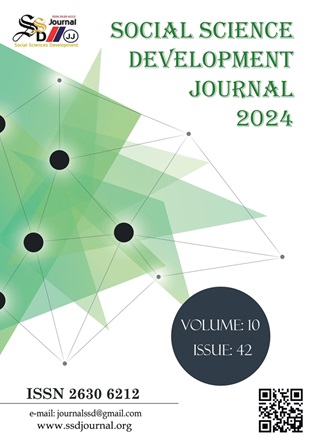MODERNIST ELEMENTS IN LORD OF THE FLIES BY WILLIAM GOLDING
DOI:
https://doi.org/10.31567/ssd.1159Keywords:
Lord of the Flies, William Golding, modernism, modernist novel, alienation, human nature, modern manAbstract
Lord of the Flies is a dystopian allegory of society published in 1954 by the Nobel Prize-winning
English writer William Golding (1911-1993), one of the leading figures of the contemporary
English novel. The novel tells the struggle for survival of a group of children aged 6 to 12, who had
to live on a deserted island because their plane was shot down during the Second World War, and
the systems they set up to achieve this without any adults, and how these systems work. This study
includes a research on how modernist narrative techniques and themes are handled in this novel by
Golding.
In the theoretical part of the study, the developments that prepared the environment for modernism
and the main basic elements of the modernist novel are discussed. After evaluating the
developments that paved the way for the emergence of modernism and the modernist novel;
modernism and its reflections on art and literature were evaluated.
The thematic and formal elements of the modernist novel and the reflection of these elements in
William Golding’s Lord of the Flies are discussed. The novel offers examples that reflect the
modern era man in terms of thematic elements such as alienation, power and power relations,
psychopathological situations, the death of the character, and formal elements such as stream of
consciousness, use of symbols, free association, inner speech, intertextuality, event,
narrator/perspective, time and space. This study is based on the search for modernist elements in
William Golding’s The Lord of the Flies and to reveal the extent to which these elements overlap
with his work. While the novel depicts the dark side of twentieth century British society and the
individual, it tries to clearly reveal the idea of human destructiveness and self-alienation.




